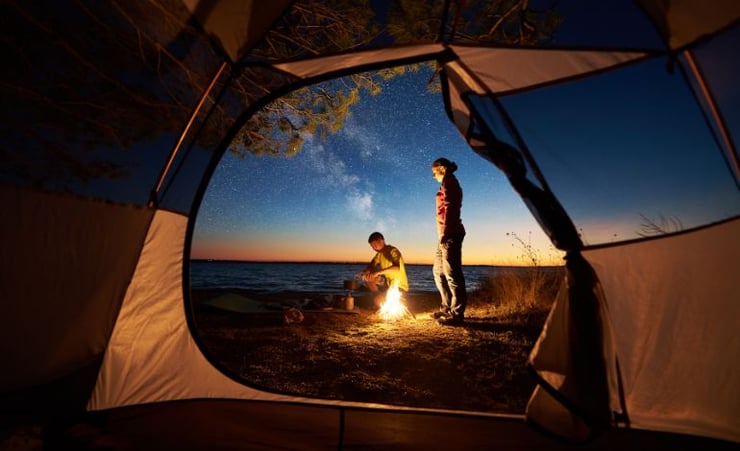Why Indian New Zealanders are getting hooked to camping

For a country as big, diverse and populous as India, generalisations are always unfair.
Nevertheless, it is safe to say that camping - a quintessential Kiwi way to spend the summer break and tap into the country's abundant natural beauty - is not very popular in world's most populous nation.
A lack of awareness, insufficient infrastructure and amenities, and prevalence of crime are often cited as the main reasons camping hasn't caught on in India. Wild animals, of which India has many, also pose a threat.
That's why when Indians visit New Zealand, they're pleasantly surprised by even the mildest introductions to camping.
For Indians who have been here for a substantial number of years, camping has become part and parcel of their holiday planning each year.
Why camping
First, camping is cheap and affordable.
While a motel or hotel room can be anywhere between $150-250 per night, campsites typically charge less than $50 for a mid-sized tent site and car park.
As a result, the money that camping families save on accommodation can be spent on adventure and activities.
Camping gives families more flexibility in terms of itinerary as tent sites are usually available even during peak season, especially in the South Island. That said, you'll probably need to book in advance if you are travelling in the North Island.
Importantly for Indians, staying at campsites gives you the freedom to cook your own food using a communal kitchen. It's a blessing for vegetarians.
Many campsites have paid hot-water shower facilities, so that's not such a major issue.
The final and most important reason, as they say in real estate, is location.
Campsites are plentiful and usually located amid stunning landscape, be it forest settings, lake shores or sandy beaches.
Even at night, star gazing is an attractive option and it's worth noting that the largest dark sky reserve in the world is the 4367-square-kilometer Aoraki Mackenzie reserve comprised of Aoraki/Mt Cook National Park and the Mackenzie Basin of the South Island.
But if you are still undecided on arguably the best way to explore the great New Zealand outdoors, read on.
Camping options
No matter where you go, a campground or holiday park is never far away in New Zealand. These provide tent sites as well as powered and unpowered motorhome or campervan sites. Some also have cabins. Facilities such as showers and kitchen space are communal.
The Department of Conservation manages more than 250 public camping areas on conservation land throughout the country. Facilities are basic with fees very reasonable.
Responsible freedom camping is possible in certain designated areas, where one can pull over, park the campervan or put up a tent free of charge.
For those who want to be close to nature and have deep pockets, the new kid on the block is "glamorous camping", or "glamping".
Glamping is just like camping although with all the comforts of home.
Those taking advantage of glamping options can find spectacular views, with expansive outside decks, cosy fires and outdoor bathtubs on offer.
A cautionary tale
However, camping can prove to be a little challenging.
First and foremost, is the unpredictable weather, especially in the mountainous South Island.
Imagine reaching the bottom of Mount Cook and suddenly the weather turns rainy and windy. Having to seek last-minute sheltered accommodation isn't anyone's idea of fun.
Hence, always keep an eye on the national weather authority MetService's website for regular updates.
Sandflies, mosquitoes and other insects are found everywhere in bushes where most of campsites are located. Investing in a good repellent and applying regularly can help.
Freedom camping bylaws also differ across New Zealand. To avoid hefty fines, it's always better to familiarise with the local camping rules.
Last, but not least, always be a responsible camper and leave no trace behind. Always take your rubbish with you and dispose of it appropriately.




